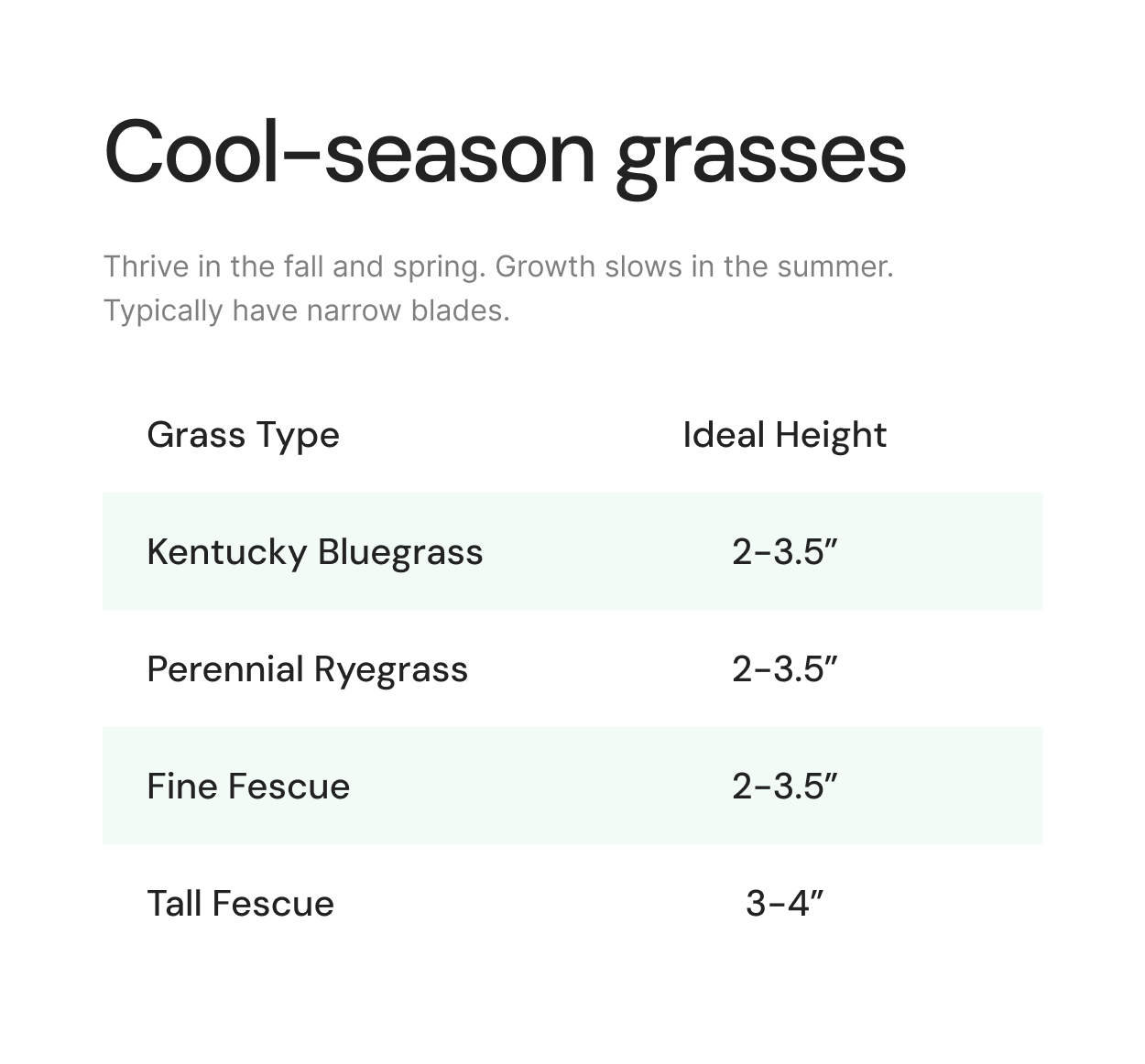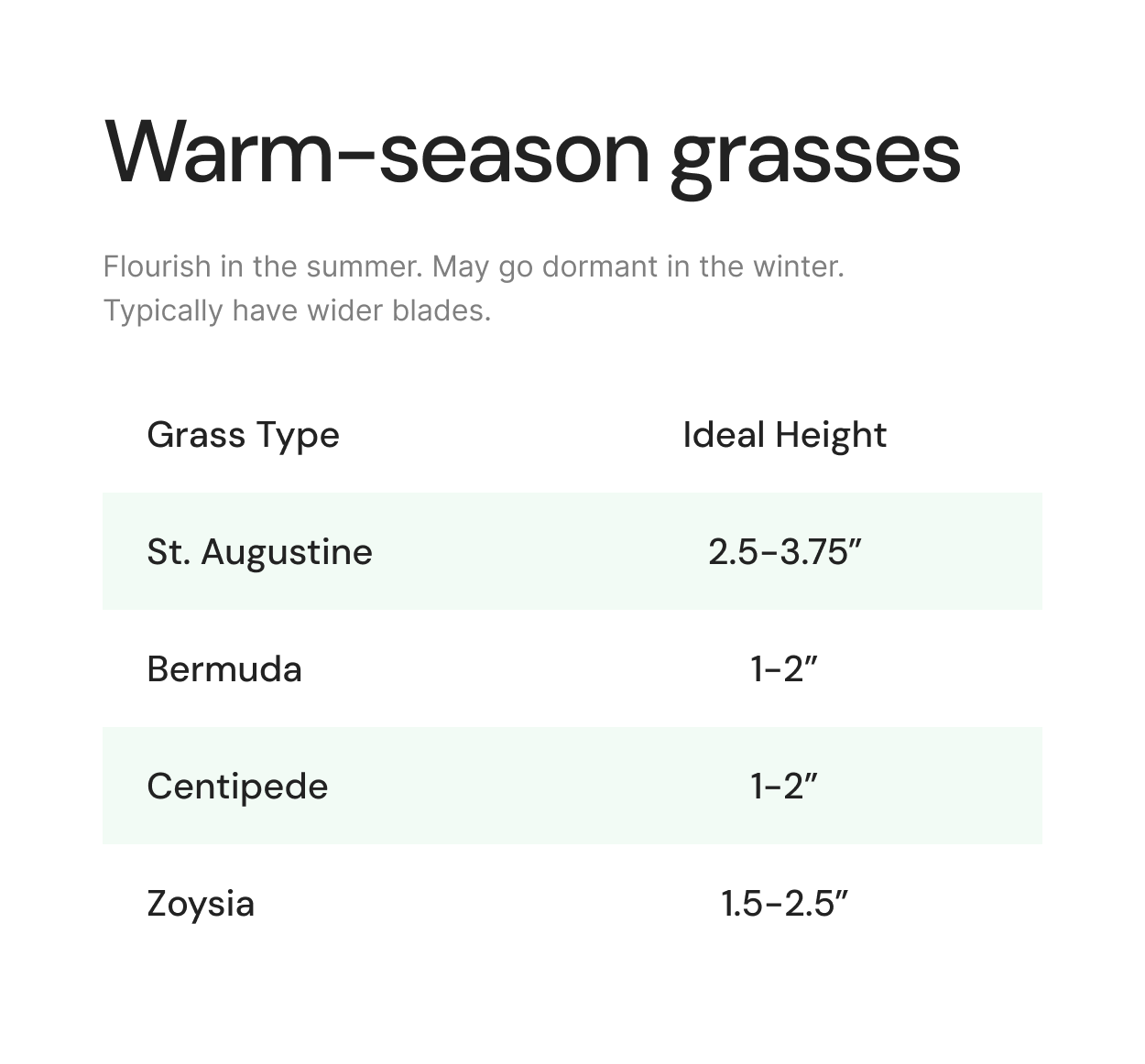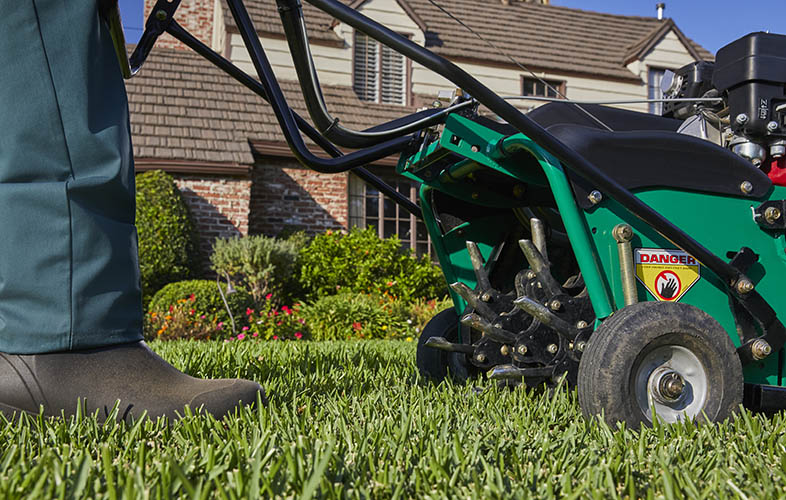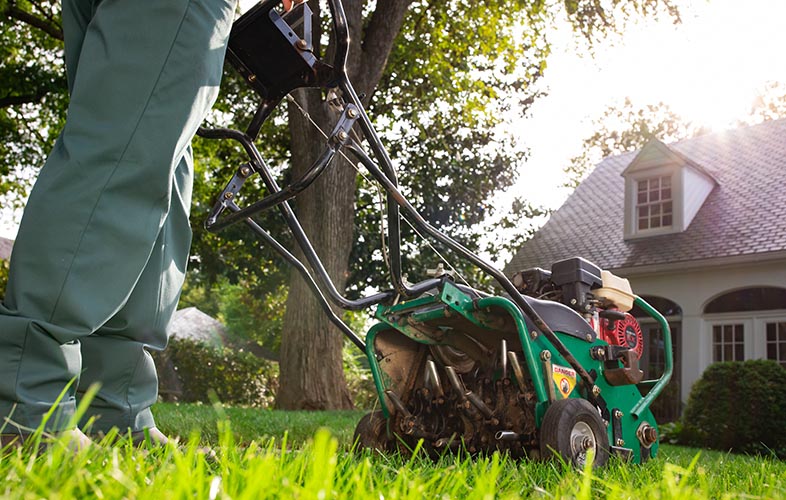Seasonality also plays a significant role in how and when you should mow your lawn. The reason for this is simple: Different weather conditions have different effects on your lawn. For more details on how short to cut grass in different seasons, keep reading.
Grass Height for Winter
Both cool and warm-season grasses typically go dormant in the winter. Effectively, this means the grass stops growing until soil temperatures rise—so mowing generally isn’t necessary in the winter. However, you want to take precautions in the fall to prepare your lawn for a potentially cold, snowy winter. One thing that you can do is mow your lawn to approximately two inches before the first frost of the year. At this height, roots and crowns are protected from the harsh, cold weather, but still short enough to help protect against snow mold. If you need help or advice on how best to protect your lawn during the winter, contact your local TruGreen® lawn care expert.
Grass Height for Spring
For the first mow of the season, you’ll want to mow slightly shorter (roughly ½ inch) than the recommended growing-season height to help remove dormant grass and encourage green-up. As for when to conduct the first mow of the season, it depends. Cool-season grasses can be mowed after any snow cover melts—usually early spring—while warm-season grasses should be mowed for the first time once the grass starts growing again (usually by late March, depending on the region).
Grass Height for Summer
Freshly-cut grass is a quintessential summer smell — and that’s because many lawns require more maintenance in the summer. Warm-season grasses, in particular, experience more rapid growth during the summer months. The charts we included above should help you determine how short to cut your grass during the dog days of summer. For optimal health, aim to cut your grass on the higher side of the range. Longer grass helps keep your soil cool, reducing the need for watering and cutting down on the maintenance needed to keep it in great shape. Mowing on the high side can also promote healthier roots and minimize weed development. Keep in mind that you want to avoid mowing during periods of extreme heat or drought, as doing so can stress your lawn.
Grass Height for Fall
In the fall, aim to keep your lawn at or near its ideal mowing height, as outlined above. If you have a cool-season lawn, fall may bring with it more frequent mowing, as these grass types grow in cooler temperatures.
Once temperatures start to dip (but before the first frost), you’ll want to do your last mow of the season, cutting to a height of approximately two inches to protect your turf for winter.











 Back to all blogs
Back to all blogs
Facebook
X
Youtube
Copy Link
Email